Is it the conclusion of this thread that a 1032x has too much/unacceptable jitter and that the next solution up to bat is a 2042x, or is there some other conclusion/recommendation (maybe a Rigol generator, or something else) in the $300 - $500 range? Or is this thread possibly a bit tough on the the 1032x ok (ie, it's "fit enough for use" in the ~$300 neighborhood)?
This have so many times handled that I do not explain so much images exept if someone ask some detail.
Of course if we compare clock jitter to other clock what is DIY assembled example in some Feeltech generator we can say Siglent internal reference have more jitter.
Out from box example FY6900 freq accuracy is with one word:Horrible and sinewave is so dirty that it can not use for any kind of serious work as also shown here previously. Of course if someone do same DIY work for Siglent he can also install there even best possible high end DOCXO. But when need better frequency accuracy and stability it have also input for external 10MHZ reference.
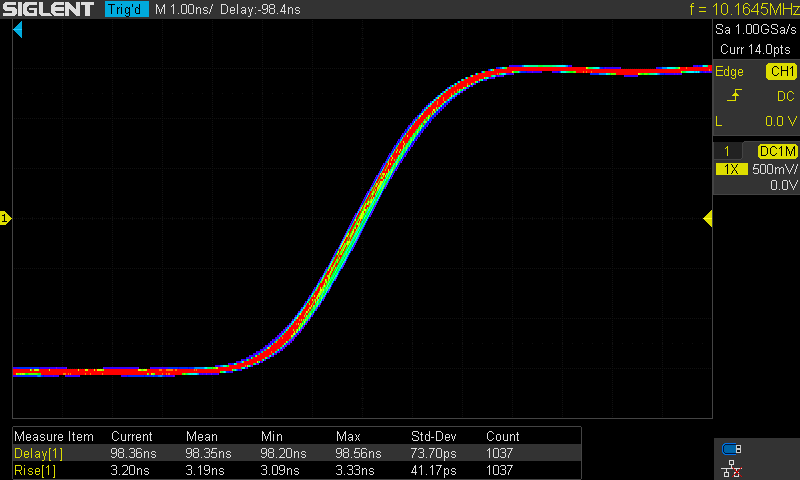
Square cycle to cycle jitter. Note frequency, it is selected so that it is not "golden frequency" for lowest jitter.
Here in this image jitter is roughly 170ps Peak (340ps Peak to Peak) specs limit is 300ps RMS what is far higher what is peak depending jitter ditribution and how much data (how long time) we collect.
Previous rising edge (trigger) is left side out from image.
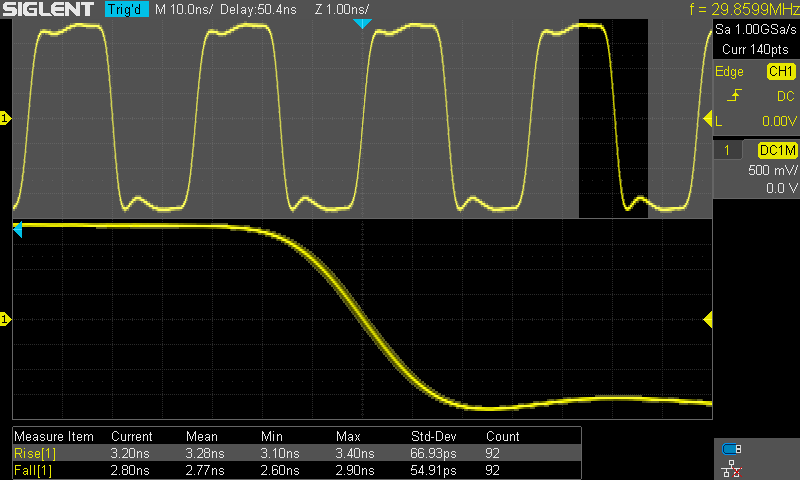
Square cycle to cycle + width jitter. Note frequency, it is selected so that it is not golden frequency for lowes jitter.
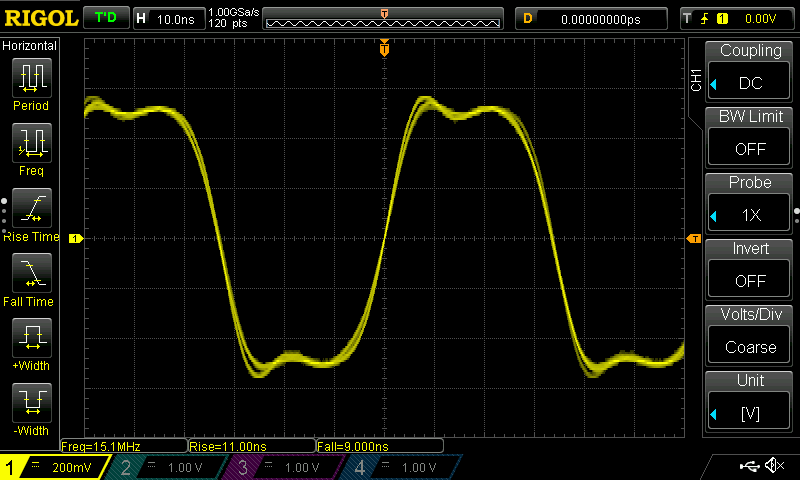
DG1032Z
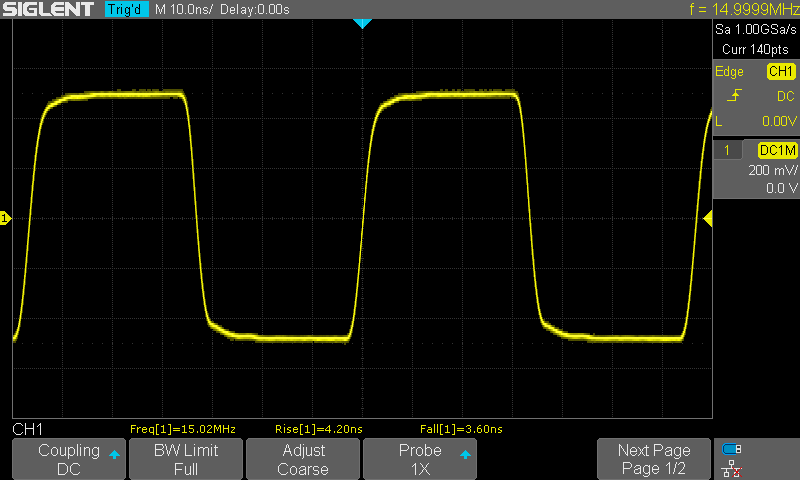
SDG1032X
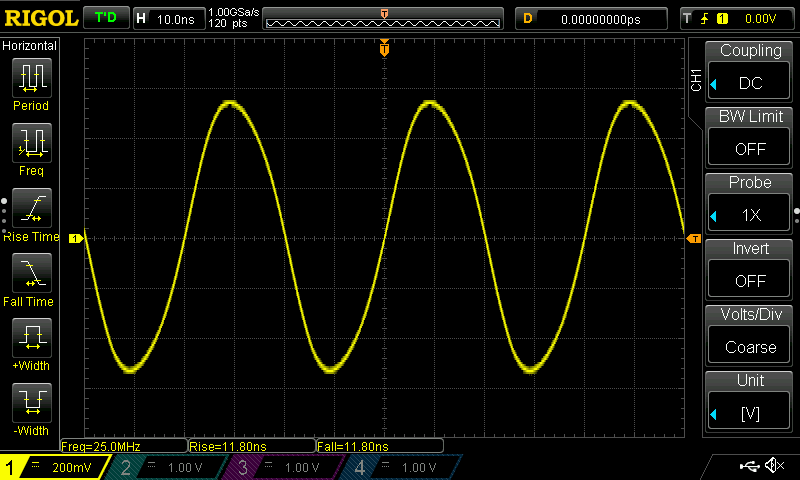
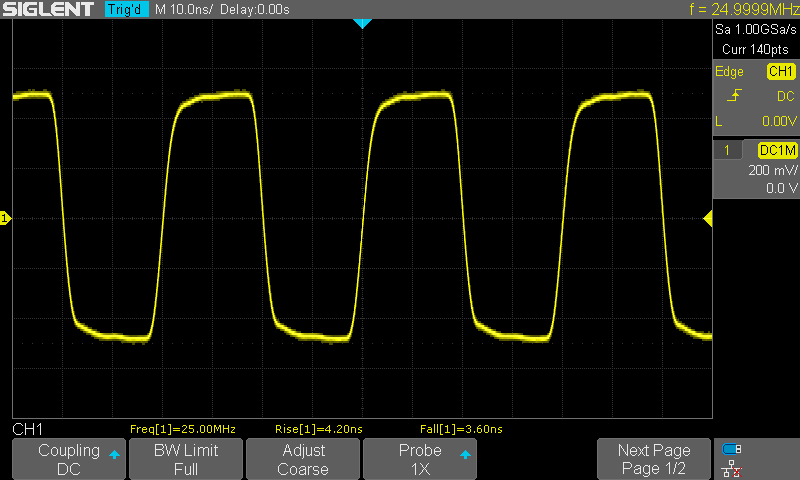
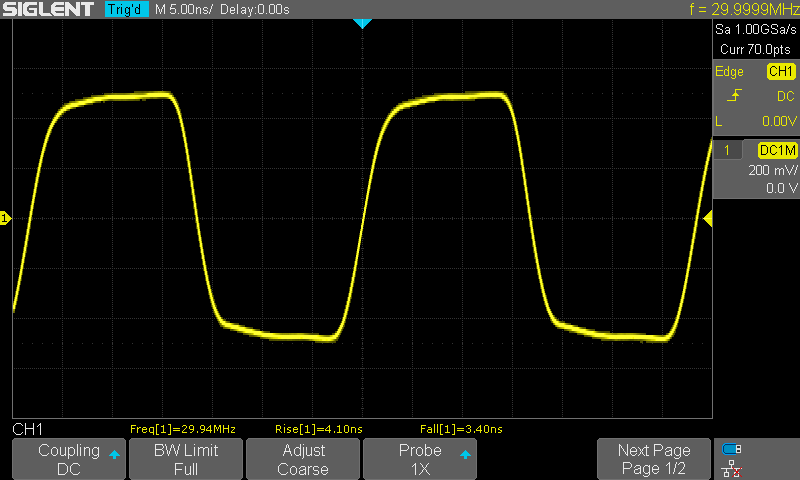
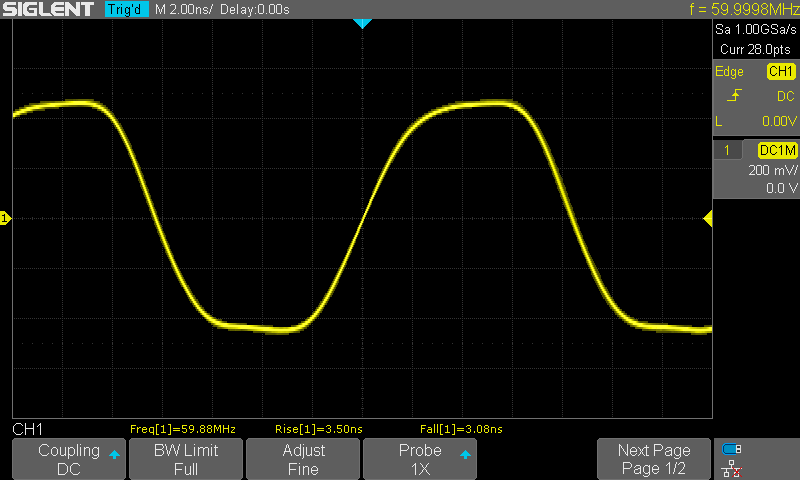 https://siglent.fi/pic/SDG1000X/SDG1000X-1Hz-Pulse-duty0-001-fall-zoom.png
https://siglent.fi/pic/SDG1000X/SDG1000X-1Hz-Pulse-duty0-001-fall-zoom.pngPulse width jitter. 1s period pulse. Pulse width 10000ns falling edge slope zoomed. Infinite persistence. Jitter roughly in 200ps peak to peak. 10/90 Ft 2.9ns.
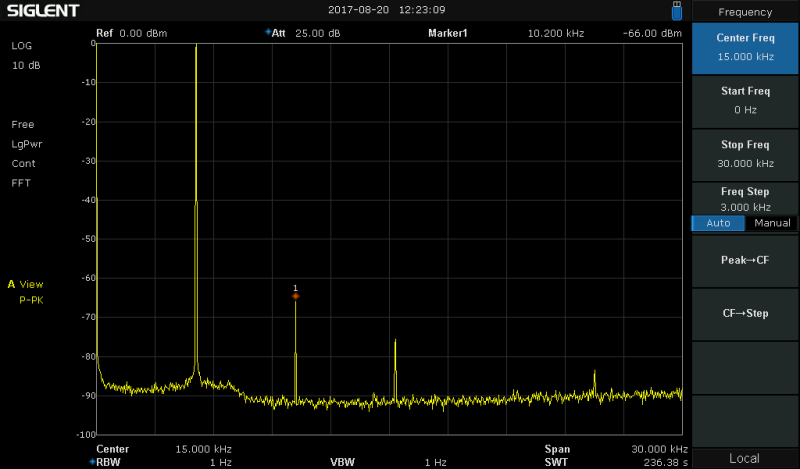
5.1kHz Note. 1st harmonic (fundamental) level is higher. So level distange to 2ns harmonic is not accurate and perhaps more than displayed 66dBc. This is due to fact that 5.1kHz is out from SSA frequency range and it start attenuate more and more when go under specified 9kHz.
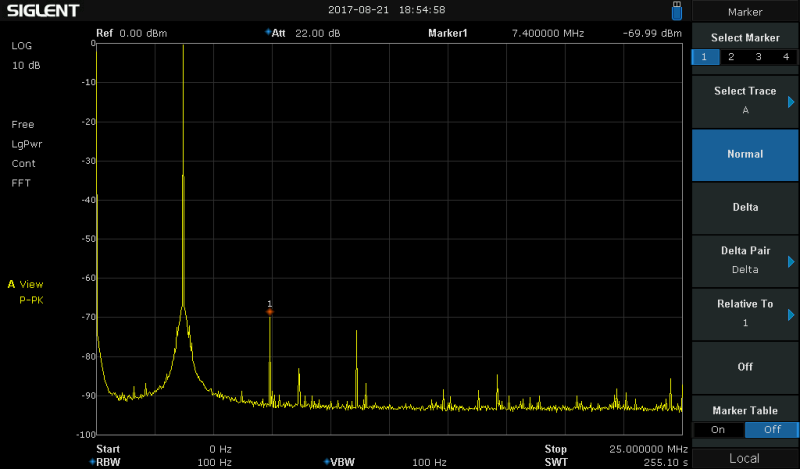
3.7MHz
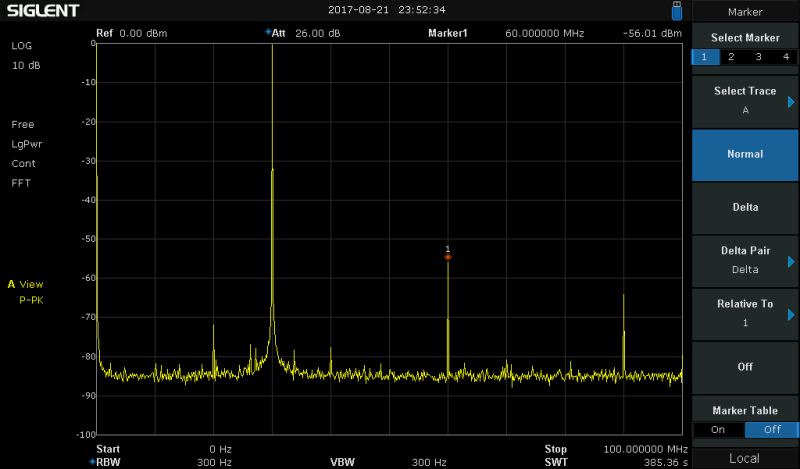
30MHz
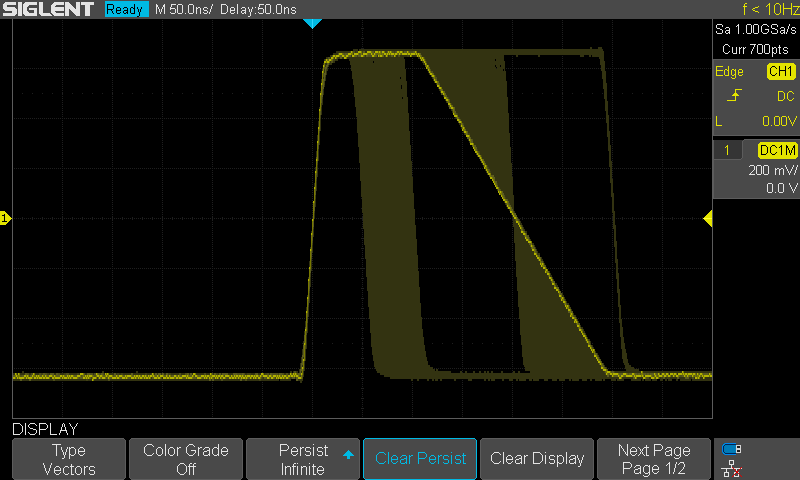
In this last image pulse period is continuously 1s
All time scope have been with infinite persistence.
First there have been 50ns pulse. Sfter bthen pulse width is adjusted slowly with very small increments to 100ns. After then adjusted for 300ns. After then 200ns width and then started to ajust slowly with very small increments falling edge slope to 150ns fall time.
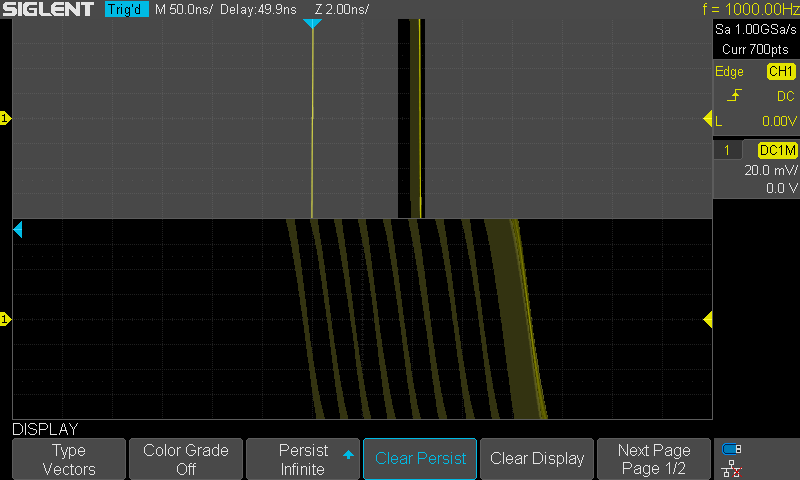
In this image continuous 1kHz freq and 100ns width. After then width have adjusted 8 steps using 1ns steps and finally 10 steps using 0.1ns steps.
There can see small jitter, roughly p-p 200ps.
If look shape in zoom window top and bottom there can see this "EasyPulse" technology produced some kind of risetimejitter or wobbling or undulating how it need name I do not know. But partially reason is also when I "wrong use" oscilloscope. Analog input stage is highly overdriven because I want better image for show these pulse width steps and if whole signal top and bottom is in image this falling edge slope looks very different in this time scale 2ns/div. This is for show these steps, not for show whole edge shape.
Continue in next msg due to forum image limits